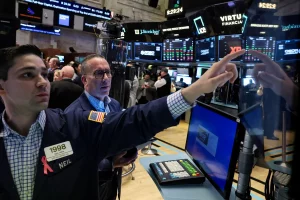- 17 May 2024
- 38
The Impact of Global Economic Trends on Forex Assets

The foreign exchange market, or forex, is one of the most dynamic and liquid financial markets globally, with a daily trading volume exceeding $6 trillion. Forex trading involves the exchange of currencies, and its fluctuations are influenced by a multitude of factors, including global economic trends. This article explores how various global economic trends impact forex assets, offering insights into key trends and their implications for forex traders.
Economic Growth and Forex Markets

Economic growth, measured by Gross Domestic Product (GDP), is a fundamental driver of currency values. Countries with robust economic growth tend to see their currencies appreciate due to increased investor confidence and higher interest rates. Conversely, countries experiencing economic slowdowns or recessions often see their currencies depreciate.
For instance, the US dollar typically strengthens when the US economy grows faster than other major economies, as investors seek higher returns. In contrast, during economic downturns, investors may move away from the dollar towards safe-haven currencies like the Swiss franc or the Japanese yen.
Interest Rates and Currency Valuations
Interest rates set by central banks are another crucial factor affecting forex assets. Higher interest rates offer better returns on investments denominated in that currency, attracting foreign capital and leading to currency appreciation. Conversely, lower interest rates can lead to depreciation.
For example, the US Federal Reserve’s interest rate policies significantly impact the USD. When the Fed raises rates, the dollar often strengthens. On the other hand, if the European Central Bank (ECB) cuts rates, the euro typically weakens against other currencies.
Inflation and Currency Stability
Inflation rates influence the purchasing power of a currency. High inflation erodes the value of a currency, leading to depreciation, while low and stable inflation supports a strong currency. Forex traders closely monitor inflation indicators such as the Consumer Price Index (CPI) and Producer Price Index (PPI).
Countries with persistently high inflation, like Argentina or Venezuela, often see their currencies weaken substantially. Conversely, nations with low and stable inflation, such as Switzerland, tend to have stronger currencies.
Political Stability and Economic Policies
Political stability and sound economic policies are critical for maintaining currency strength. Political turmoil or uncertainty can lead to a loss of investor confidence and capital flight, causing currency depreciation. Sound economic policies, including fiscal responsibility and structural reforms, can enhance a country’s economic outlook and currency value.
For instance, Brexit negotiations caused significant volatility for the British pound as uncertainty regarding the UK’s future relationship with the EU led to fluctuating investor confidence.
Global Trade and Forex Markets
Global trade dynamics, including trade balances and trade policies, significantly impact forex assets. A trade surplus (exports greater than imports) typically strengthens a country’s currency, while a trade deficit can weaken it. Protectionist trade policies can also lead to currency depreciation due to potential trade wars and reduced economic growth.
The US-China trade war illustrated this, where tariffs and trade restrictions led to volatility in the USD/CNY exchange rate, affecting global forex markets.
Commodities and Currency Correlations
Certain currencies are closely tied to commodity prices. For instance, the Canadian dollar (CAD) is correlated with oil prices due to Canada’s significant oil exports. Similarly, the Australian dollar (AUD) is influenced by commodity prices, particularly iron ore and gold.
A rise in commodity prices typically strengthens these currencies, while a decline weakens them. For example, a surge in oil prices can lead to an appreciation of the CAD against other currencies.
Technological Advancements and Forex Trading
Technological advancements have revolutionized forex trading, making it more accessible and efficient. Algorithmic trading, artificial intelligence (AI), and blockchain technology are transforming how forex markets operate. These technologies enable faster and more accurate trading decisions, influencing forex asset prices and market dynamics.
Algorithmic trading, in particular, has increased market liquidity and reduced transaction costs, although it can also lead to increased volatility due to rapid and large-scale trading activities.
Case Studies and Comparative Analysis
To understand the impact of global economic trends on forex assets, we can examine specific case studies and perform a comparative analysis.
Case Study 1: The 2008 Financial Crisis
The 2008 financial crisis had a profound impact on global forex markets. As the crisis unfolded, investors flocked to safe-haven currencies like the US dollar and the Japanese yen, causing them to appreciate. Meanwhile, currencies of emerging markets and those heavily reliant on commodity exports, like the Brazilian real and the Russian ruble, depreciated sharply.
Case Study 2: COVID-19 Pandemic
The COVID-19 pandemic led to unprecedented volatility in forex markets. Initially, the US dollar strengthened as a safe-haven currency. However, as the Federal Reserve implemented aggressive monetary easing, including rate cuts and quantitative easing, the dollar weakened. Meanwhile, currencies of countries with effective pandemic responses and economic recovery plans, like the Australian dollar, saw relative strength.
Analysis Table: Key Trends and Their Impact on Forex Assets
| Economic Trend | Positive Impact on Currency | Negative Impact on Currency | Examples |
|---|---|---|---|
| Economic Growth | Currency appreciation | Currency depreciation | US dollar during economic boom |
| Interest Rates | Higher rates -> appreciation | Lower rates -> depreciation | USD (Fed rate hikes) |
| Inflation | Low inflation -> stability | High inflation -> depreciation | Swiss franc (low inflation) |
| Political Stability | Stability -> confidence | Instability -> depreciation | GBP (Brexit uncertainty) |
| Global Trade | Trade surplus -> strength | Trade deficit -> weakness | USD/CNY (trade war) |
| Commodity Prices | Higher prices -> strength | Lower prices -> weakness | CAD (oil prices) |
Comparative Table: Currency Performance During Key Events
| Event | Safe-Haven Currencies (USD, JPY) | Commodity Currencies (CAD, AUD) | Emerging Market Currencies |
|---|---|---|---|
| 2008 Financial Crisis | Appreciated | Depreciated | Depreciated |
| COVID-19 Pandemic | Initially appreciated, then mixed | Initially depreciated, then mixed | Initially depreciated, then mixed |
| US-China Trade War | Mixed | Depreciated | Mixed |
Conclusion
Global economic trends profoundly impact forex assets, with factors such as economic growth, interest rates, inflation, political stability, global trade, and commodity prices playing critical roles. Understanding these dynamics is essential for forex traders and investors seeking to navigate the complex and volatile forex markets. By analyzing historical events and current trends, traders can make informed decisions and develop strategies to mitigate risks and capitalize on opportunities in the forex market.

